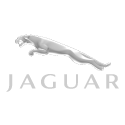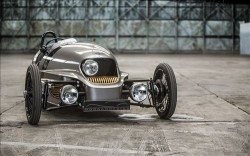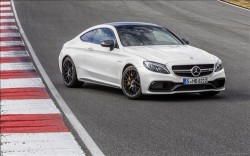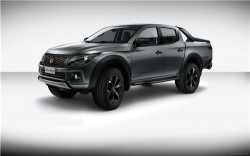Wallpapers
- Advanced Lightweight Coupe Concept
- C-XF Concept
- F-Type
- Miscellaneous
- R Coupe Concept
- RD6 Concept
- S-Type
- Super V8 Portfolio
- X-Type
- XJ
- XF (2009)
- XK
- XKR
 Jaguar cars have a long history of elegant styling and sporting performance. The brand was born in the United Kingdom, and for years, its vehicles were synonymous with the old-world luxury of the British upper classes. Even though the marque is now owned by Ford, Jaguar cars still bear the unmistakable gleam of traditional English refinement.
Jaguar cars have a long history of elegant styling and sporting performance. The brand was born in the United Kingdom, and for years, its vehicles were synonymous with the old-world luxury of the British upper classes. Even though the marque is now owned by Ford, Jaguar cars still bear the unmistakable gleam of traditional English refinement.
The company traces its roots to the Swallow Sidecar Company, founded in 1922 by Bill Lyons and William Walmsley. Based in Blackpool, England, the company produced a popular line of aluminum motorcycle sidecars. Swallow eventually switched its focus to automobile production, changing its name to SS Cars Ltd. in 1933. The first vehicle to carry the Jaguar name was the SS Jaguar 100, released in 1935.
After World War II, SS Cars switched its moniker to Jaguar so as not to
be associated with the Nazi paramilitary organization that bore the
same initials. Its first postwar offering was 1948's Mark V. The luxury
sedan was joined that year by the XK 120, a sports car that was the
fastest production automobile of its day — its name was derived from
its top speed. The XK 120 proved quite popular, and helped Jaguar
establish a strong presence in the sports car market.
By the 1950s, Jaguar had begun exporting luxury vehicles to the United
States. Created just for the American market, the Mark VII Saloon was
introduced in 1951; Jaguar quickly realized it had a hit on its hands.
In 1956, the car took the prize at the Monte Carlo Rally. Later in the
decade, Jaguar added the Mark VIII and Mark IX to its lineup.
The 1960s saw the launch of one of Jaguar's most well-known models. The
E-type coupe, or XK-E as it was known in the U.S., blended performance
and refinement, wrapped in a sexy package. The success of groups like
the Beatles and the Rolling Stones and icons like Twiggy, the fashion
model, made British culture a hot commodity during the '60s — a fact
that had positive implications for Jaguar's popularity in the U.S.
A decade later, Jaguar introduced the XJ6C and XJ12C coupes, as well as
the XJ-S. A new V12 was put in the XJ12, making it the fastest
production sedan of its day. The 1980s saw Jaguar continuing to raise
the bar in performance with the launch of the XJ-S HE and a true world
supercar, the XJ220. By this time, however, Jaguar also faced increased
competition from German automakers and adverse exchange rates. The
company's managers decided to recognize the potential value of a
partnership with another company. This decision ultimately led to a
full buyout of Jaguar by Ford in 1990.
Ford's influence (and financial support) was evident with the 1997
launch of Jaguar's XK8 and supercharged XKR sports cars. Powering both
was Jaguar's new AJ-V8, a compact yet powerful engine that was also
used in certain Land Rover vehicles. In recent years, Jaguar has made
an effort to broaden its product line with the introduction of
lower-priced, entry-luxury vehicles. Today, the marque is known for
offering cars that boast distinctive styling, sporting performance and
luxurious interiors.
Views: 29020
[Source: Edmund's ]
Latest Wallpapers
Following is the list of recent pictures updates on our site.
DieselStation Social

















